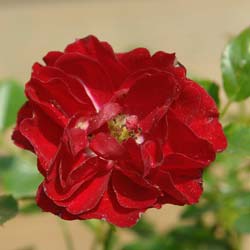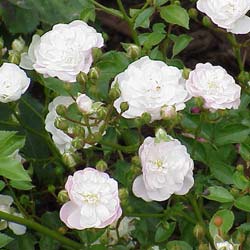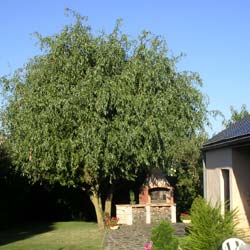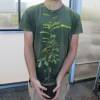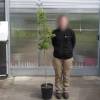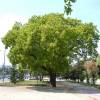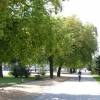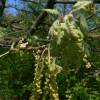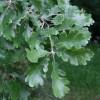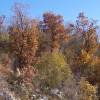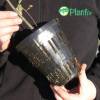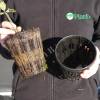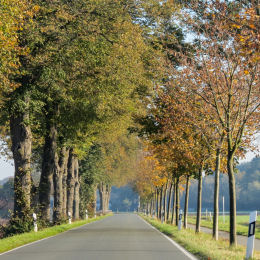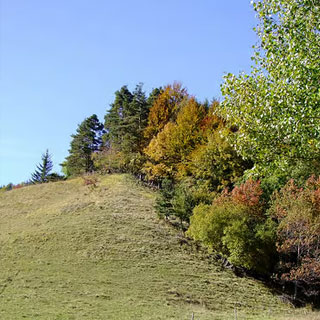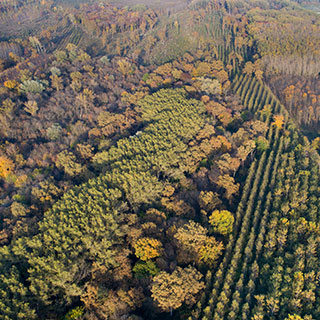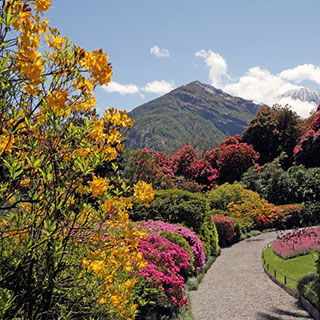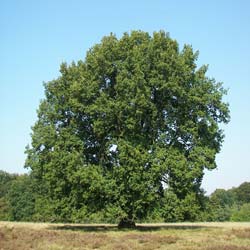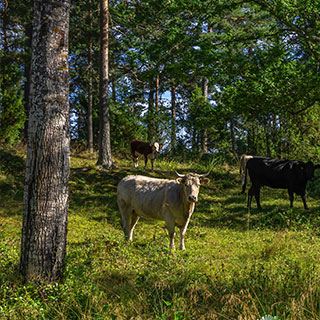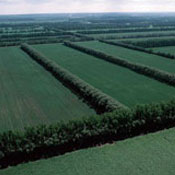Oak, downy / Quercus pubescensBuy: Oak, downy
Pictures of: Oak, downy
Description: Oak, downyDowny Oak, pubescent Oak - Quercus pubescens (latin)
Area of origin: Southern Europe.
• See the Oaks catalogue Plant, or reforest Downy Oak, pubescent Oak, Quercus pubescens – Foresters Guide1) The Downy Oak, pubescent Oak (Quercus pubescens) is it suitable for my land?The Downy Oak can be found in different zones, with altitudes going from sea level up to 1400m, but it is more common to find it around 800 m in altitude. This genus is demanding in heat during the growing season, and thrives where the average annual temperatures are between 9 and 15°C. It resists well to winter cold, even though it is scarcely found under continental climate with frequent frost. It grows where annual rainfalls vary between 500 and 1200 mm, and is resistant to drought, which is better than Sessile and Pedunculate Oak. 2) Which planting density for my Downy Oak, pubescent Oak plot? (Quercus pubescens)
The planting density is the number of plants planted in one hectare (acre). Here it means determining the initial number of young plants and to choosing their repartition in the available space.
3) How to prepare the soil to plant Downy Oak, pubescent Oak (Quercus pubescens)?In Silviculture, working the soil is a key element in the success of planting. The root system of the tree must take rapidly where planted. Whether the work is done mechanically or manually, we recommend working the soil in its depth for optimum planting. 4) How to plant the Downy Oak, pubescent Oak (Quercus pubescens)?a- Receipt, storage and preparation of the plants before planting
In all case, you must: Finally, the worker will tamp down the soil carefully with its foot. It is forbidden to press strongly or again to heel-butt the plant to avoid crushing the earth-ball and damage the root system of the plant. Video on planting using a planting cane Buy Planting cane 5) How to limit weeds on my Downy Oak, pubescent Oak plot (Quercus pubescens) ?
During the first years, it is essential to eliminate all self-propagating plants. Not controlled they are going to be in competition with your plants and are going to deprive the young trees of the vital elements they require to grow (water, light and nutritional elements). You must therefore eliminate mechanically this unwanted competition until the trees are big enough to be able to dominate it.
It is in fact acts often carried out using portable thermic Strimmers or billhooks to clear plants on a line or around the plants themselves.
These actions are done using cutters and flail mowers, horizontal or vertical cutters, mounted on mini excavators or tractors. As a result, they cannot be undertaken outside the spaces available between the tree lines (plants or plants). 6) How to protect my young Downy Oak, pubescent Oak plants from wildlife (Quercus pubescens) ?
There is a necessity to protect the plot as soon as the population’s density of Cervidae (deer and roe deer in particular) risk leading to significant damage such as undergrowth of the plants or friction of the stems. Sometimes, the setting up of plants’ protection is also necessary as soon as the rodents’ population (rabbits, hares, coypu, voles...) are locally important.
Related Categories: Oak, downy
Your reviews about: Oak, downy |


























































































































